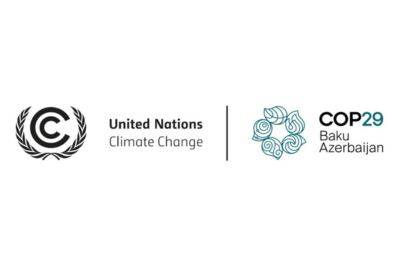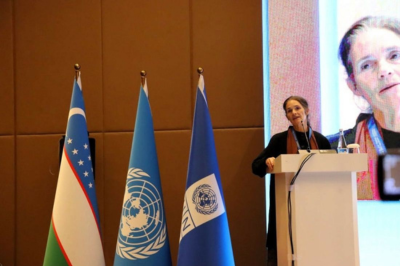COP29, the 29th Conference of the Parties, represents a critical moment for global climate action, often referred to as the "Finance COP." The annual COP meetings, organized by the UNFCCC, bring nations together to assess climate progress and strengthen commitments. At COP29, for the first time in 15 years, countries will set a new global climate finance goal to replace the 2009 pledge by developed nations to provide $100 billion annually by 2020 to support climate action in developing countries—a goal that has been delayed and proved insufficient to meet growing needs.
This conference is an opportunity to establish a stronger, more effective climate finance commitment. In addition, COP29 provides a platform for setting enhanced emissions targets, advancing adaptation measures, evaluating progress, and increasing support for nations facing climate-related loss and damage. As a potential turning point, COP29 aims to align global financing with the ambitious climate actions needed to address the escalating impacts of climate change. This policy digest explores the key areas of focus and potential outcomes from COP29, offering insights into the challenges and implications for future climate policy.
At COP29 in Baku, success will hinge on progress across four key issues, reflecting the urgency of addressing climate challenges while promoting equitable and sustainable development. The following insights highlight the essence of each priority area:
- A New Global Climate Finance Goal that Responds to Developing Countries’ Needs
Despite its continued growth, the amount of climate funding is still far from sufficient. Estimates vary greatly (because of the models and inputs used). Still, most conclude that after investing their resources, developing nations will require an extra $500 billion to $1 trillion annually in climate finance from outside financing sources. Compared to the existing promise of $100 billion, that is at least five times as much.
The Paris Agreement of 2015 pledged nations to replace the $100 billion yearly target with a new collective quantified goal on climate finance (NCQG) in 2024 that would consider developing nations' needs. However, it's yet unclear what this additional commitment will entail. It is imperative that negotiators at COP29 not only drastically expand the overall amount of climate financing, but also outline the terms and timeline for its distribution, the projects it will fund, how it will reach the most vulnerable populations, and how all climate finance will be evaluated. More strategic use of a variety of financial instruments, improved access to financing, increased financial predictability, and a results-oriented approach are all ways that negotiators can enhance the quality of the financing that is provided.
- Momentum for Stronger National Climate Commitments
The Paris Agreement mandated that nations submit more robust national climate commitments, referred to as "nationally determined contributions" every five years. After COP29, the next round is due in a few months. This means that the UN meeting in Baku is the final significant chance to establish clear standards for what the next generation of NDCs should aim toward.
Countries, particularly the biggest polluters in the world, should declare their plans to submit ambitious and daring new NDCs at COP29 and Climate Week in New York in September. Other countries may be inspired to do the same, which might lead to additional investment, business, and city activity. Specifically, countries should ensure their NDCs align with the level of emissions reductions scientists say are necessary for limiting global temperature rise to 1.5 degrees C (2.7 degrees F) and preventing some of the worst effects of climate change by 2025. NDCs should also include sector-specific targets, such as concrete goals for shifting to emissions-free energy and food systems. They should put people at the center, ensuring a ‘just transition.’ And they should include stronger adaptation commitments with a focus on the most vulnerable, marginalized groups and communities. These should align with sectoral targets outlined in the Global Goal on Adaptation and with countries’ own longer-term National Adaptation Plans.
- Show Progress Towards Existing Commitments on Cities, Energy, Food and Forests
Unprecedented international promises were made during the COP28 that included, among other initiatives, accelerating low-carbon transportation, building resilient food systems, doubling energy efficiency, quadrupling renewable energy, and moving away from fossil fuels. At COP29, nations are expected to hold themselves responsible for achieving such goals.
Global Methane Pledge, UAE Declaration on Sustainable Agriculture, Resilient Food Systems and Climate Action, Glasgow Declaration on Forests and Land Use, and the city-focused Coalition for High Ambition Multi-Level Partnerships (CHAMP) are just a few of the voluntary climate action initiatives that hundreds of nations have joined in recent years. Even though these programs have strong commitments, they will not be celebrated until there is apparent achievement. Countries could demonstrate their commitments at COP29 by declaring specific actions to fulfill them and by presenting data and information on their current progress.
- A Clear Process for Funding and Responding to Loss and Damage
An agreement to fully operate the Loss and Damage Fund was reached at the COP28 session in Dubai following years of rigorous negotiations.
At COP28, the operationalization of a Loss and Damage Fund was officially established to support climate-vulnerable nations impacted by climate change. This fund was among the first decisions at the conference, drawing on the framework agreed to at COP27. With initial pledges reaching approximately $661 million, the fund marks a significant step in addressing climate-induced loss and damage in developing countries, though experts indicate that further financing will be essential to meet the high anticipated needs. With the support of this fund, vulnerable nations will be able to address climate change impacts that are beyond human adaptation, such as the loss of homes and lives during severe floods or the removal of coastal historic sites because of rising sea levels. A board will determine the fund's governance and policy, and the World Bank will serve as its host.
In conclusion, COP29 presents a critical opportunity to make tangible strides in climate action across these four essential areas. Setting a robust new global climate finance goal that directly meets the financial needs of developing countries is vital to ensuring equitable climate progress. Stronger national climate commitments, especially from the world's largest polluters, will be essential in driving ambitious emissions reductions and adaptation efforts. Demonstrating clear progress on previous pledges, particularly in transforming energy, food systems, and forestry, will reinforce global accountability. Lastly, operationalizing the Loss and Damage Fund offers hope to vulnerable nations in addressing the irreversible impacts of climate change. Together, these priorities at COP29 underscore a path toward a more resilient, equitable, and sustainable future.





